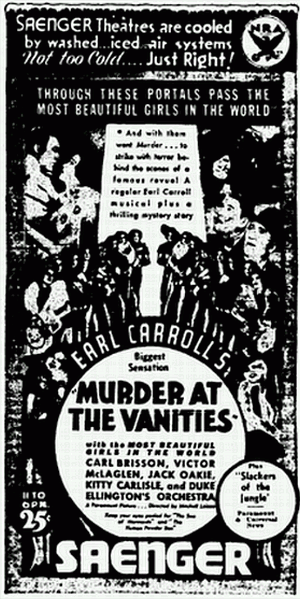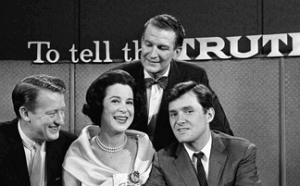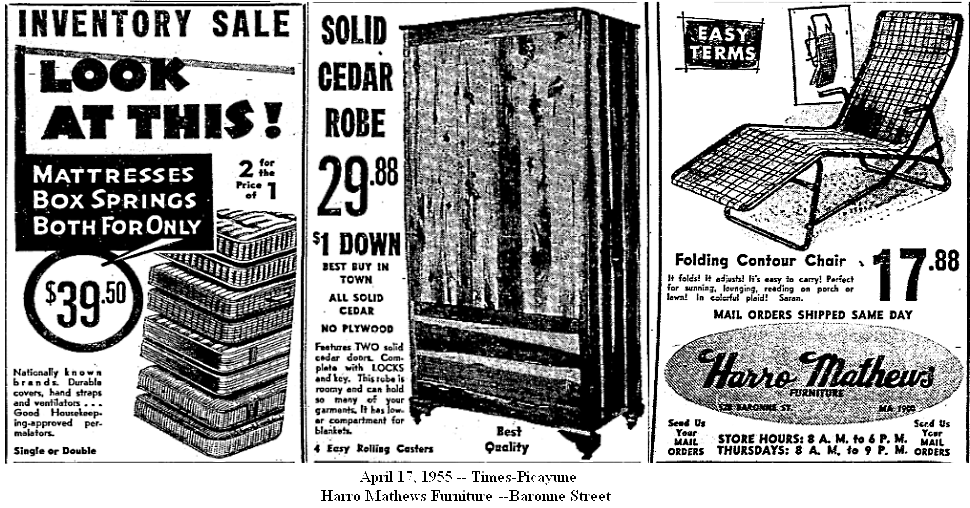|
Today in New Orleans History |
|
|
April 17


 In 1934 she made two films with Bing Crosby --
She Loves Me Not and Here Is My Heart --and had a lead role in Murder at the Vanities.
On the right is a Saenger Theater advertisement from May 27, 1934 for Murder of the Vanities, which featured Carl
Brisson, Victor McLaglen, Jack Okie, Duke Ellington and his Orchestra, and a young Kitty Carlisle. In 1935 she appeared
in A Night at the Opera with the Marx Brothers. In the early
1950s, Carlisle was an occasional panelist on the NBC game show, Who Said That?, She was a panelist on To Tell the Truth from 1956 to 1978. She was also a semi-regular panelist on Password, Match Game, Missing
Links, and What's My Line? Kitty Carlisle
(left) with Tom Poston, Bud Collyer, and Orson Bean on the set of To Tell the Truth. On December 31, 1966,
Carlisle made her debut with the Metropolitan Opera as Prince Orlofsky in Strauss's Die Fledermaus and made her final
performance with the company was on July 7, 1973. Carlisle resumed her film career in 1987 in Woody Allen's Radio
Days. She also appeared in 1993's Six Degrees of Separation. Her last movie appearance was in Catch
Me If You Can (2002) in which she played herself in a dramatization of a 1970s To Tell the Truth episode. Known
for her gracious manners and personal elegance, Catherine Conn was honored by her New Orleans school, Louise S. McGehee, as
a Distinquished Alumnae in 1994. She was a long-time spokeswoman for the arts and served 20 years on the New York State Council
on the Arts. In 1991, she received the National Medal of Arts from President George H. W. Bush. New Orleans born Catherine
Conn passed away in her New York City apartrment on April 17, 2007.  

To receive an update for each day in New Orleans
history, join our facebook page
- Today in New Orleans History
|
|
|

To receive an update for each day in New Orleans history,
join our facebook page - Today in New
Orleans History.
Analytics |




